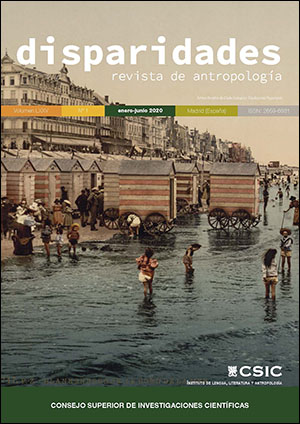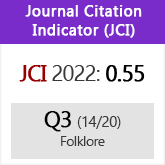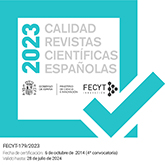La antropología del turismo se hace mayor: ¿Más que un matrimonio de conveniencia?
DOI:
https://doi.org/10.3989/dra.2020.001ePalabras clave:
Estudios de turismo, Teoría, Historia, Intermediación cultural, Imaginarios, MovilidadResumen
Si bien la antropología y el turismo no siempre han tenido una relación feliz, la antropología del turismo ha alcanzado la mayoría de edad, y esto en diferentes tradiciones académicas. Desde hace medio siglo, este subcampo de la antropología desempeñó un papel importante en el establecimiento de los estudios de turismo. Aquí trazo esta historia, analizando el influyente papel en los volúmenes editados de Hosts and Guests para dar forma a la relación entre la antropología y el turismo. Me acerco a cómo algunas ideas novedosas no fueron recogidas, mientras que otras empezaron a llevar sus propias vidas. Este ejercicio nos ayuda a comprender mejor la posición actual de la antropología del turismo dentro de los estudios de antropología y turismo, así como a identificar las direcciones futuras. Esto incluye el reconocimiento de que no hay un solo canon, sino múltiples antropologías del turismo. La antropología como disciplina tiene importantes contribuciones que hacer al estudio del turismo. Ofrece un enfoque holístico para el análisis crítico del turismo a través de su marco comparativo y la capacidad de unir varias escalas, reconociendo la interconexión intercultural de los ámbitos económico, ambiental y social. La pregunta que pide una respuesta es cómo los antropólogos deben tratar la implicación de la disciplina en el turismo contemporáneo alrededor del globo.
Descargas
Citas
Adams, Kathleen M. 1984. «Come to Tana Toraja, "Land of the Heavenly Kings": Travel Agents as Brokers in Ethnicity». Annals of Tourism Research 11(3): 469-485. https://doi.org/10.1016/0160-7383(84)90032-X
Adams, Kathleen M. 2004. «The Genesis of Touristic Imagery: Politics and Poetics in the Creation of a Remote Indonesian Island Destination». Tourist Studies 4(2): 115-135. https://doi.org/10.1177/1468797604054378
Chambers, Erve. 2000. Native tours: The Anthropology of Travel and Tourism. Prospect Heights: Waveland Press.
Clifford, James. 1997. Routes: Travel and Translation in the Late Twentieth Century. Cambridge: Harvard University Press.
Crick, Malcolm. 1994. Resplendent Sites, Discordant Voices: Sri Lankans and International Tourism. Langhorne: Harwood Academic Publishers.
Dalakoglou, Dimitris. 2010. «The Road: An Ethnography of the Albanian-Greek Cross-border Motorway». American Ethnologist 37(1): 132-149. https://doi.org/10.1111/j.1548-1425.2010.01246.x
Doron, Assa. 2005. «Encountering the 'Other': Pilgrims, Tourists and Boatmen in the City of Varanasi». Australian Journal of Anthropology 16(2): 157-178. https://doi.org/10.1111/j.1835-9310.2005.tb00032.x
Douglass, William A. y Julie Lacy. 2005. «Anthropological Angst and the Tourist Encounter». NAPA Bulletin 23: 119-134. https://doi.org/10.1525/napa.2005.23.1.119
Frohlick, Susan. 2006. «Rendering and Gendering Mobile Subjects: Placing Ourselves between Local Ethnography and Global Worlds», en S. Coleman y P. Collins (eds.), Locating the Field: Space, Place and Context in Anthropology: 87-104. Oxford: Berg.
Golub, Alex. 2014. «1974 as a Key Year in Anthropology». Savage Minds: Notes and Queries in Anthropology 6 mar. Disponible en: < http://savageminds.org/2014/03/06/1974-as-a-key-year-in-anthropology/ >. Fecha de acceso: 27 mar. 2020.
Hamilton, Scott. 2013. «Archaeology, Tourism and Other 'Marriages of Convenience': Examples from Western Canada», en C. J. Walker y N. Carr (eds.), Tourism and Archaeology: Sustainable Meeting Grounds: 165-180. Walnut Creek: Left Coast Press.
Harrison, Julia D. 2003. Being a Tourist: Finding Meaning in Pleasure Travel. Vancouver: UBC Press.
Hitchcock, Michael. 2004. «Margaret Mead and Tourism: Anthropological Heritage in the Aftermath of the Bali Bombings». Anthropology Today 20(3): 9-14. https://doi.org/10.1111/j.0268-540X.2004.00267.x
Kaspin, Deborah. 1997. «On Ethnographic Authority and the Tourist Trade: Anthropology in the House of Mirrors». Anthropological Quarterly 70(2): 53-57. https://doi.org/10.2307/3317505
Lévi-Strauss, Claude. 1961. Tristes Tropiques. Trad. J. Russell. Nueva York: Criterion Books.
Lindquist, Johan A. 2009. The Anxieties of Mobility: Migration and Tourism in the Indonesian Borderlands. Honolulu: University of Hawai'i Press. https://doi.org/10.21313/hawaii/9780824832018.001.0001
McKean, Philip F. 1976. «An Anthropological Analysis of the Culture-brokers of Bali: Guides, Tourists and Balinese». Paper presented at the Joint UNESCO/BRD Seminar on the Social and Cultural Impacts of Tourism, Washington D.C.
Meisch, Lynn A. 1995. «Gringas and Otavalenos: Changing Tourist Relations». Annals of Tourism Research 22(2), 441-462. https://doi.org/10.1016/0160-7383(94)00085-9
Nash, Dennison. 1977. «Tourism as a Form of Imperialism», en Valene L. Smith (ed.), Hosts and Guests: The Anthropology of Tourism: 33-47. Philadelphia: University of Pennsylvania Press.
Núñez, T. 1963. «Tourism, Tradition, and Acculturation: Weekendismo in a Mexican Village». Ethnology 2: 347-352. https://doi.org/10.2307/3772866
Salazar, Noel B. 2005. «Más allá de la globalización: La "glocalización" del turismo». Política y Sociedad 42(1): 135-149.
Salazar, Noel B. 2006. «Antropología del turismo en países en desarrollo: Análisis crítico de las culturas, poderes e identidades generados por el turismo». Tabula Rasa: Revista de Humanidades 5: 99-128. https://doi.org/10.25058/20112742.270
Salazar, Noel B. 2010. Envisioning Eden: Mobilizing Imaginaries in Tourism and Beyond. Oxford: Berghahn.
Salazar, Noel B. 2012. «Tourism Imaginaries: A Conceptual Approach». Annals of Tourism Research 39(2): 863-882. https://doi.org/10.1016/j.annals.2011.10.004
Salazar, Noel B. 2013. «Imagineering Otherness: Anthropological Legacies in Contemporary Tourism». Anthropological Quarterly 86(3): 669-696. https://doi.org/10.1353/anq.2013.0045
Salazar, Noel B. 2017. «Anthropologies of Tourism: What's in a Name?» American Anthropologist 119(4): 723-747. https://doi.org/10.1111/aman.12954
Salazar, Noel B. 2018. Momentous Mobilities: Anthropological Musings on the Meanings of Travel. Oxford: Berghahn. https://doi.org/10.2307/j.ctvw04b0b
Salazar, Noel B., y Nelson H. H. Graburn (eds.). 2014. Tourism Imaginaries: Anthropological Approaches. Oxford: Berghahn.
Selwyn, Tom (ed.). 1996. The Tourist Image: Myths and Myth Making in Tourism. Chichester: John Wiley.
Shepherd, Robert J. 2001. Suspect Others: Tourism and Development in the Field of Anthropology. Ph. D. Dissertation, Department of Anthropology. Fairfax: George Mason University.
Singh, Sagar. 2014. «Anthropology, Tourism and Mobility: New Directions for Research». Eastern Anthropologist 67(1-2): 39-60.
Skinner, Jonathan y Dimitrios Theodossopoulos (eds.). 2011. Great Expectations: Imagination and Anticipation in Tourism. Oxford: Berghahn.
Smith, Valene L. (ed.). 1977. Hosts and Guests: The Anthropology of Tourism. Philadelphia: University of Pennsylvania Press.
Tilley, Christopher. 1997. «Performing Culture in the Global Village». Critique of Anthropology 17(1), 67-89. https://doi.org/10.1177/0308275X9701700105
Van Beek, Walter y Annette Schmidt (eds.). 2012. African Hosts and their Guests: Cultural Dynamics of Tourism. Martlesham: James Currey.
Werner, Cynthia. 2003. «The New Silk Road: Mediators and Tourism Development in Central Asia». Ethnology 42(2): 141-161. https://doi.org/10.2307/3773779
West, Paige. 2008. «Tourism as Science and Science as Tourism: Environment, Society, Self, and Other in Papua New Guinea». Current Anthropology 49(4): 597-626. https://doi.org/10.1086/586737 PMid:19230266
Zorn, Elayne y Linda C. Farthing. 2007. «Communitarian Tourism: Hosts and Mediators in Peru». Annals of Tourism Research 34(3): 673-689. https://doi.org/10.1016/j.annals.2007.02.002
Publicado
Cómo citar
Número
Sección
Licencia
Derechos de autor 2020 Consejo Superior de Investigaciones Científicas (CSIC)

Esta obra está bajo una licencia internacional Creative Commons Atribución 4.0.
© CSIC. Los originales publicados en las ediciones impresa y electrónica de esta Revista son propiedad del Consejo Superior de Investigaciones Científicas, siendo necesario citar la procedencia en cualquier reproducción parcial o total.Salvo indicación contraria, todos los contenidos de la edición electrónica se distribuyen bajo una licencia de uso y distribución “Creative Commons Reconocimiento 4.0 Internacional ” (CC BY 4.0). Puede consultar desde aquí la versión informativa y el texto legal de la licencia. Esta circunstancia ha de hacerse constar expresamente de esta forma cuando sea necesario.
No se autoriza el depósito en repositorios, páginas web personales o similares de cualquier otra versión distinta a la publicada por el editor.
















